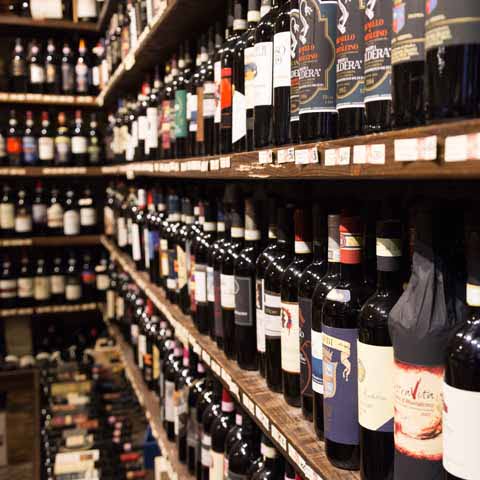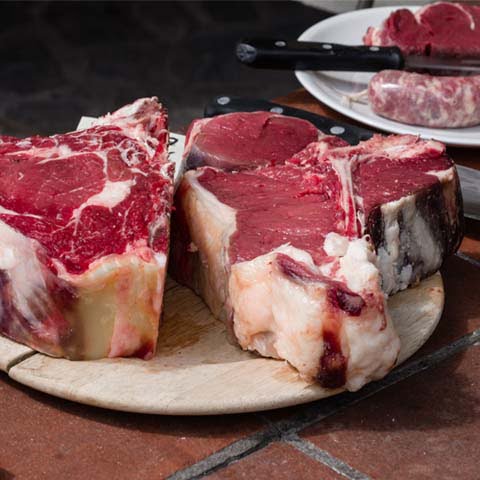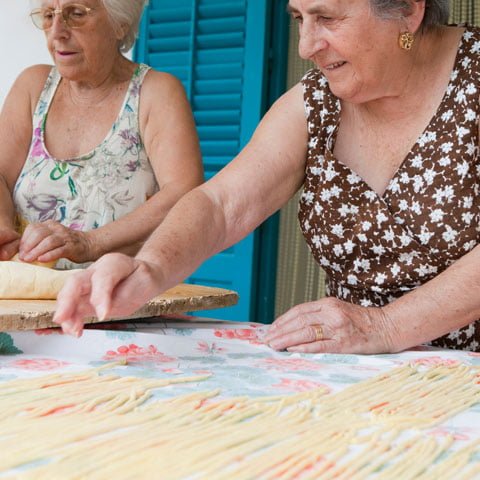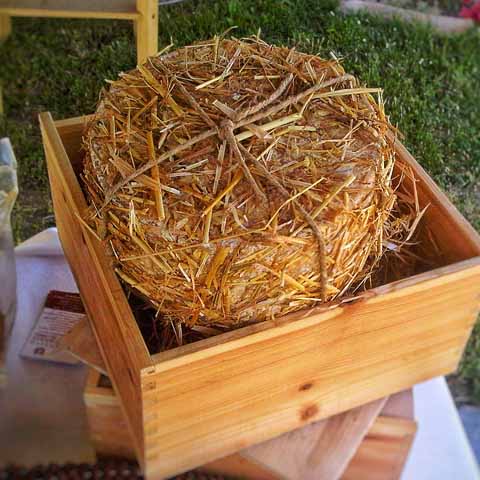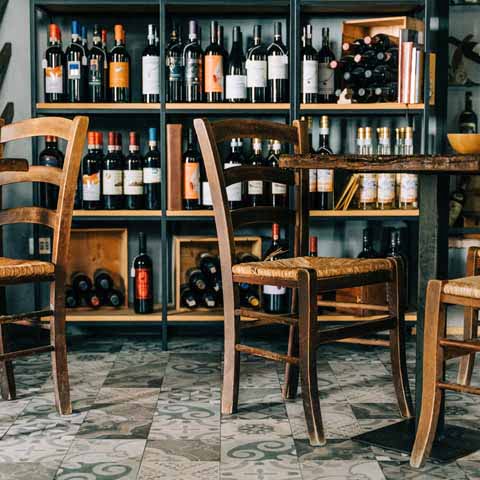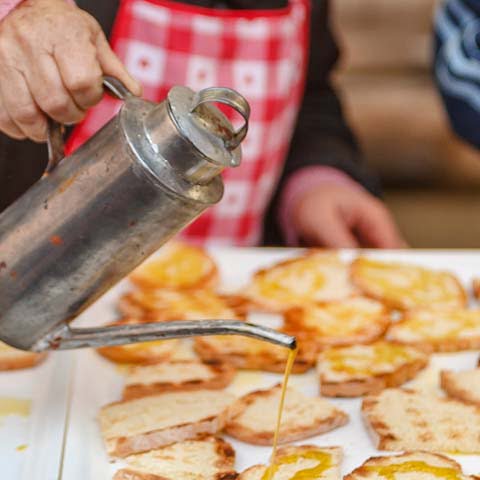Though Tuscany is famous for its world-class cuisine, the Maremma area has had such a long history of being an inhospitable area conquered by other cultures and abandoned to the swamps that it has developed its own rather isolated culture of dining. While many other areas of Italy feature sumptuous dishes that are replicated in five-star restaurants the world over, the cuisine of Maremma tends to feature largely peasant dishes in the forms of soups, stews, and other wild-caught fish and game dishes. Of course, simply because it come from a harsher stock does not mean that the food of Maremma is any less delicious or any less worth seeking out and experiencing firsthand.
Game animals are a common sight on the dinner tables of Maremma. In particular, hare, wild boar and pheasant feature in many of Maremma’s dishes, both in stews or simply served roasted. Also on the menu are fishes caught from the Tyrrhenian and Ligurians seas, and other hard-won foods found in the wild. Indeed, to this day many of the Maremmani enjoy finding their ingredients and meals out in the wild, such as wild sprouts of purple asparagus, or even wild frogs which they tend to fry.
Since reclaiming the region from the swamps, however, the Maremmani have really begun to branch out in terms of foods. There are many different kinds of cheeses, vegetables, pastas, and traditional Italian cured meats to be found in the region these days. Furthermore, the region has proven fruitful for making olive oil and wine, which has allowed for something of a culinary revolution in Maremma in more recent years. The Maremmani use their olive oil in everything, and the region features several DOC protected wines. For its sheer range of unique dishes, Maremma is one place that travelers should not skip.
APPETIZERS
In most restaurants throughout Maremma, visitors will find appetizers consisting of local cured meats and cheeses. The sliced meats can be made from anything ranging from beef to pork to wild boar to roe deer and more. The Maremmani offer all sorts of cured meats, from soppressata to finocchiona, from prosciutto to bresaola, and from capicollo to salame di cinghiale. These meats tend to be served alongside pecorino cheeses, bruschette, liver pâtés on crostini, fresh tomatoes, basil, mushrooms, and local olive oil.
Another appetizer favored in Maremma is pinzimonio. Pinzimonio consists of little more than a mix of balsamic vinegar, salt, and extra virgin olive oil, mixed together. From there, diners dip raw or prepared vegetables into the oil mix and then eat them with freshly sliced bread. Favored vegetables of pinzimonio include asparagus, leeks, fennel, artichokes, carrots, and chicory.
Crostini, small slices of toasted bread served with a variety of toppings, are favored throughout the Tuscany area. The traditional crostini topping in Maremma is sausage with stracchino cheese.
FIRST COURSE
Like everywhere else in Italy, the people of Maremma enjoy delicious pasta. One common pasta favored in Maremma is papparedelle alla lepre, which consists of long, flat ribbons of egg pasta topped with a meat sauce made from hare. A pasta enjoyed even more by the Maremmani, though, is Tortello Maremmano. These pastas are essentially large ravioli that are filled with fresh ricotta cheese and spinach. The pasta can either be served in a simple butter sauce, or with a meat sauce made from the local wild boar. A common variant of this dish is served in smaller ravioli and made with chard rather than spinach. This is sometimes referred to by the name, tortelli ripieni di bietola e ricotta con sughi di carne.
For those who favor seafood, Maremma has plenty of dishes to offer. Seafood salads are common among the seaside towns, and tend to be served with artichokes and a special regional sauce. Of course, this is nowhere near the end of what Maremma has to offer in terms of seafood. Also available are dishes like baccalà alla maremmana. This dish is made with cod fished from the Tyrrhenian or Ligurian sea, and is cooked with tomatoes, onion, parsley and garlic.
Also served in the region are seafood stews like Cacciucco Livornese. This seafood stew is made from all kinds of seafood, and everyone who makes it has their own unique combination of fishes, shellfishes, octopi and calamari, lobster, and other fare, all mixed together and cooked in a tomato sauce. This stew is usually served alongside Tuscan bread, either freshly sliced or toasted, that has been rubbed with garlic.
Perhaps one of the most traditional dishes found in Maremma though, is aquacotta. Literally meaning “boiled water,” this vegetable soup has numerous variants throughout the region depending upon where you find it, but is generally made with stale Tuscan bread, tomato and olive oil. It is believed that this dish actually originated with the Etruscans.
Scottiglia is a traditional dish that is part soup and part stew. This recipe features a mixture of meats, mainly less expensive cuts of meat, such as offal, and tomatoes.
SECOND COURSE
Perhaps the most common food served in Maremma is cinghiale, or wild boar. Wild boar can be served in innumerable ways. One of the most common ways for the Maremmani to serve wild boar is to marinate it in local red wines, cook it slowly and carefully over a spit, and then serve it to guests alongside a generous portion of local mushrooms, vegetables, such as artichokes, and ricotta cheese.
Another common way for the Maremmani to serve wild boar, however, is to serve it in stew. Cinghiale in Umido or cinghiale alla cacciatora, or wild boar stew, consists of chunks of wild boar that are cooked slowly in tomato sauce and wine, and then served with a variety of other ingredients. Many vegetables and herbs can be included in this stew, such as artichokes, olives, onion, carrot, celery, chard, leeks, asparagus, juniper berries, and other herbs. It all depends on who is making the stew, as everybody seems to have their own variation upon this dish. One common beloved variation of wild boar stew that the people of Maremma love, however, is cinghiale in dolceforte or cinghiale agro dolce, both of which mean bitter-sweet. This stew is literally wild boar stew made with some sweet ingredients, such as chocolate, and is particularly favored on long winter nights.
Lamb is favored among the locals as well, and one of the most iconic lamb dishes in Maremma is buglione d’agnello. This rich stew is made with lamb, tomatoes, garlic, rosemary, and wine. Prior to serving, a slice of toasted bread rubbed with garlic is placed at the bottom of the bowl, and then the bread is topped with the stew. Some parts of Maremma may make this stew with other meats, such as pheasant, hare, or wild boar.
SIDE DISHES AND CONDIMENTS
The local Certaldo onion features prominently in the local cuisine and is a common component of side dishes in the Maremma area.
The land around Grosseto has proven quite fruitful in growing olives, which has led to Maremma developing its own culture of cultivating olive oil. This Olio Extravergine di Oliva Toscano, is an extra virgin Olio Verde, or green oil, and is beloved throughout the region.
Additionally, the locals use this olive oil to make a special local mayonnaise. Olive oil mayonnaise is richer and more flavorful than most mayonnaises, and has a delightful yellow color and a thick, smooth texture. The Maremmani adore it on sandwiches, with seafood, and in salads.
STREET FOOD
When craving something while out and about, visitors to Maremma cannot go wrong with a panino made with porchetta. Porchetta is a very distinctive kind of pork made locally in Maremma and other parts of Central Italy. Porchetta consists of a whole, deboned pig that has been stuffed with salt, pepper, garlic, rosemary, and other herbs then slowly roasted for many hours. The locals love to slice the porchetta thinly and serve it in their panini.
DESSERT
One place that the Maremmani do not skimp out on in their cuisine is in their desserts. There are many desserts that are considered local specialties in the Maremma area. One of these specialties is ciambella. This traditional Italian cake is made with little more than egg, sugar, butter, flour, and milk, and produces a fluffy, thin, golden cake that anybody can enjoy for dessert, a snack, or even for breakfast. Ciambella is best served alongside a cold glass of milk.
Another simple dessert served in Maremma is biscotti cantuccini, or almond biscotti. These twice-baked crunchy cookies are made with almonds and are absolutely delicious served after a hot meal alongside a glass of sweet wine. Many locals actually take to dipping the biscotti in their wine to make them a little easier to chew.
For a slightly more historical dessert, Maremma also offers Sfratto di Pitigliano, or Sfratto dei Goym. This dish has roots in the local Jewish history and consists of a thin, flaky dough surrounding a sweet filling. The filling is made from honey, walnuts, orange rind, anise seed, and nutmeg, and the dough is made from flour and sugar mixed with egg, olive oil, and white wine. The dough is then wrapped around the filling and baked to perfection.
For visitors that want something truly decadent, though, one cannot go wrong with Maremma’s Torta al Cioccolato, or chocolate pudding tarts. For these delicious desserts, a creamy chocolate custard is wrapped in a crumbly short pastry and sprinkled liberally with pine nuts.
WINE
Maremma features three local wine roads, along which can be found numerous vineyards producing DOC protected wines. Along the Monteregio di Massa Marittima wine road, one can find such wines made as the Monteregio DOC, Vermentino, and Vin Santo Occhio di Pernice. Along the Maremma hills wine road, one finds Ansonica Costa dell’Argentario DOC, Capalbio DOC, and white and red IGT Maremma Toscana among others. Along the Amiata trail, visitors may find Montecucco DOC wine being made.
Visitors to the Maremma area can go on wine tours to see these tremendous wines being grown and made, or for those that simply wish to sample them, they can be found in restaurants throughout the region.
The Maremma countryside is filled with flavorful local ingredients that feature prominently in the food of the area. When in Maremma, travelers can enjoy handmade pappardelle alla lepre, rich meat stews, and unforgettable desserts all paired with excellent local wines.Travel Guides
The Tuscany Region of Italy
The Cities of Tuscany, Italy
